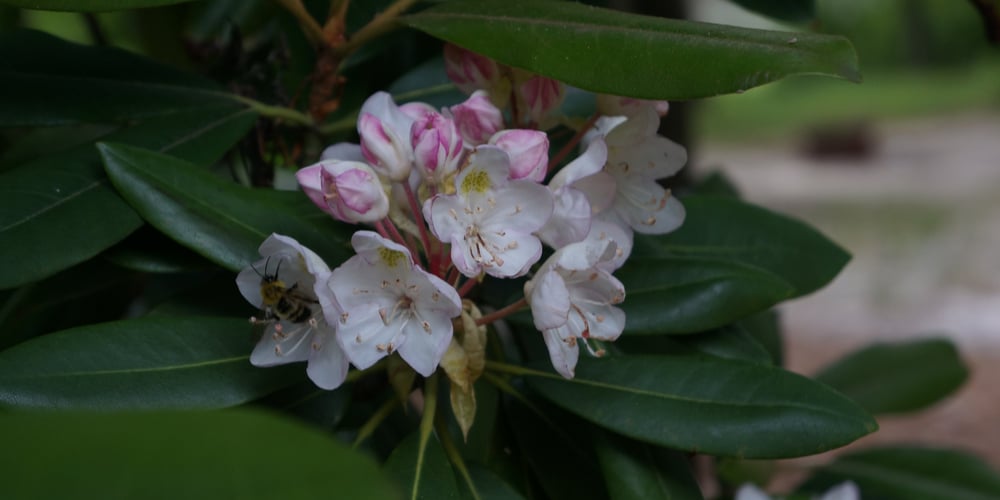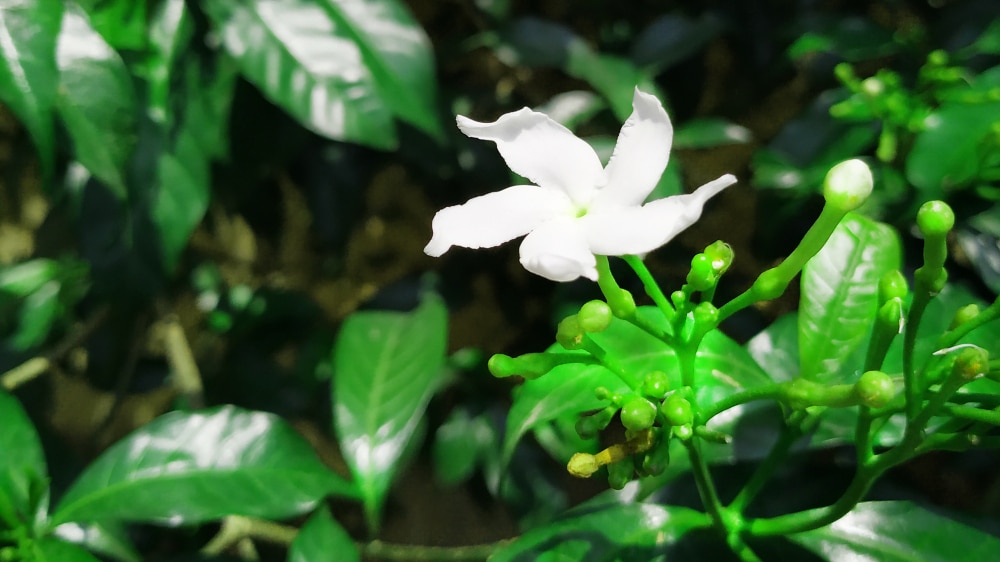Snow White Indian Hawthorns are beautiful shrubs that simply make any space, yard, or garden more gorgeous. With their striking and fragrant white flowers and glossy green leaves, these plants add an element of elegance and refinement.
But beyond their looks, Snow White Indian Hawthorns are also tough plants that are easy to care for. In fact, they’re one of the best shrubs for beginners. Even though its common name implies that it’s from India, it is actually not.
This shrub is native to China and can also be found in some other parts of Asia and Australia. Surprisingly, this attractive plant is an easy-to-care-for shrub that can flourish in varying conditions.

| Botanical Name | Rhaphiolepis Indica |
| Common Name | Snow White Indian hawthorn |
| Plant Type | Perennial |
| Flower Color |
Light Pink or White |
| Size When Mature | 36 – 72 Inches |
| Bloom Time | Late Winter to Early Spring |
| Sun Requirements | Full sun, afternoon shade |
| USDA Hardiness Zones | 8 – 10 |
| Soil PH Range | 6.0 – 7.5 |
| Soil Type | Acidic, moist, well-drained |
| Water Needs | Medium |
| Native Area | China |
What You Need to Know About Snow White Indian Hawthorn
Snow White Indian Hawthorn is a beautiful, evergreen shrub with glossy green leaves and small, white flowers. The foliage of this plant is somewhat bronze as it matures to a deep green color. It has beautiful oblong serrated leaves that are usually around 2 to 4 inches in length. When you touch its leaves, it has a leathery feel.
The shrub produces snow-white to light pink blooms in clusters during the spring, hence its name. The flowers are five-petaled and star-shaped, and it would then produce tiny, dark blue fruits that will continue to grow through winter.
Snow White Indian Hawthorn shrubs are fairly simple and easy to grow as long as you provide them with the appropriate growing conditions.
How to Care for Snow White Indian Hawthorn
Here’s everything you need to know about growing and caring for a thriving Snow White Indian Hawthorn:
Light
This shrub is best grown in direct sun, which means that it should get at least six hours of sunshine on most days. It does well in partial shade, but it will be healthier and blossom more effectively with full sun.
Water and Soil Needs
If it’s newly planted, you may have to water it regularly to help it get established. As soon as the plant has established and matured, the watering frequency can be reduced.
It is adaptable to different soil types such as sand, loam, clay, or silt soil, but prefers moist, well-drained soil with a pH between 6.0 and 7.5.
Temperature Requirements
This shrub survives and does well in USDA zones 8-10. It flourishes in warm climates and is also resilient to temperatures as low as 5 degrees Fahrenheit, but the extreme cold can damage the leaves and even kill the plant. On the warm side, the bush can withstand temperatures up to 90 degrees Fahrenheit.
Fertilizer
The best fertilizer to use on a Snow White Indian Hawthorn is an all-purpose slow-release fertilizer. This plant may not be a heavy feeder but this will encourage healthy growth and bountiful flowers. Feed during the spring to benefit from the entire growing season.
Alternatively, you may also mix your soil with compost before planting to provide the necessary nutrients for your Indian Hawthorn.
Common Diseases
Insect pests such as aphids, nematodes, and scale are common problems with Indian Hawthorns. They can cause damage to the foliage and stunt the plant’s growth. To avoid such problems, spray your plant with organic neem oil as needed.
Leaf damage and discoloration are just some of the diseases that this plant can suffer from. Moreover, these are usually caused by overwatering or poor drainage. To prevent these problems, make sure to plant in well-draining soil and water only when necessary.
These shrubs are also susceptible to fungal diseases which can result in damage to the leaves. Keeping the leaves dry, especially during humid weather, can help prevent these diseases.
Snow White Indian Hawthorn Propagation
The most common propagation method of the Snow White Indian Hawthorn is from semi-hardwood cuttings. The stems of these plants should be harvested mid-summer when they are still flexible but firm enough to snap when bent.
Once you have your cuttings, dip the bottom end into some rooting hormone and plant them in a well-draining potting mix. Keep the soil moist but not wet and place the pots in a warm, shady area. After a few weeks, you should see new growth. Once the new plants are established, you’re now ready to transplant them into your garden.
This shrub can also be propagated from seed, but it’s a much slower process. You can start by sowing the seeds in a potting mix. Place your pots on a sunny windowsill to help with germination. Keep the soil moist but not wet and wait for the seeds to germinate which can take several weeks or even months. Once they’ve sprouted, you can then transplant them into individual pots.

